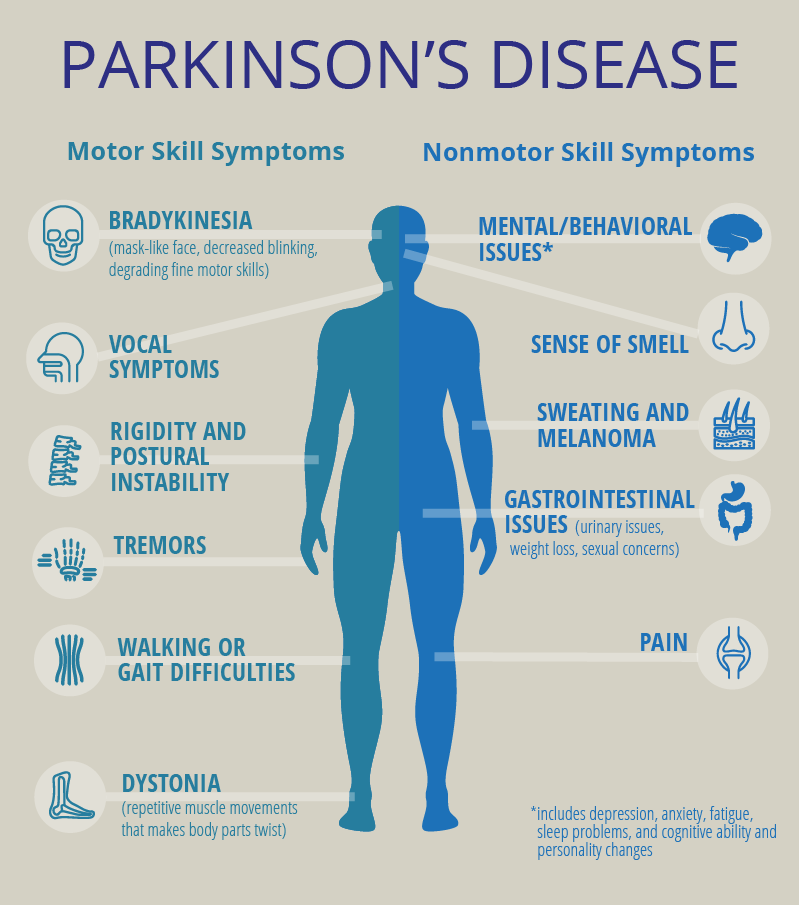Parkinson’s disease is a progressive disorder of the central nervous system affecting movement and inducing tremors and stiffness. It has 5 stages to it and affects more than 1 million individuals every year in India. This is chronic and has no cure yet. It is a neurodegenerative disorder affecting dopamine-producing neurons in the brain. Parkinson's disease is a progressive nervous system disorder that affects movement. Symptoms start gradually, sometimes starting with a barely noticeable tremor in just one hand. Tremors are common, but the disorder also commonly causes stiffness or slowing of movement.
Tremor. A tremor, or shaking, usually begins in a limb, often your hand or fingers. You may rub your thumb and forefinger back and forth, known as a pill-rolling tremor. Your hand may tremble when it's at rest.
Slowed movement (bradykinesia). Over time, Parkinson's disease may slow your movement, making simple tasks difficult and time-consuming. Your steps may become shorter when you walk. It may be difficult to get out of a chair. You may drag your feet as you try to walk.
Rigid muscles. Muscle stiffness may occur in any part of your body. The stiff muscles can be painful and limit your range of motion. Impaired posture and balance. Your posture may become stooped, or you may have balance problems as a result of Parkinson's disease.
Loss of automatic movements. You may have a decreased ability to perform unconscious movements, including blinking, smiling or swinging your arms when you walk.
Speech changes. You may speak softly, quickly, slur or hesitate before talking. Your speech may be more of a monotone rather than have the usual inflections.
Writing changes. It may become hard to write, and your writing may appear small.
step 1: Importing necessary library
step 2: Loading the dataset
step 3: Exploring the dataset
step 4: Visualization of the dataset
step 5: Finding correlation
step 6: Preprocessing the dataset (splitting data into testing set and training set)
step 7: Model Building
step 8: Model Evaulation
step 9: Testing model using custom data
In this Python machine learning project, we learned to detect the presence of Parkinson’s Disease in individuals using various factors. We used an XGBClassifier for this and made use of the sklearn library to prepare the dataset. This model gives us an accuracy of 94.87%, which is great considering the small dataset.
